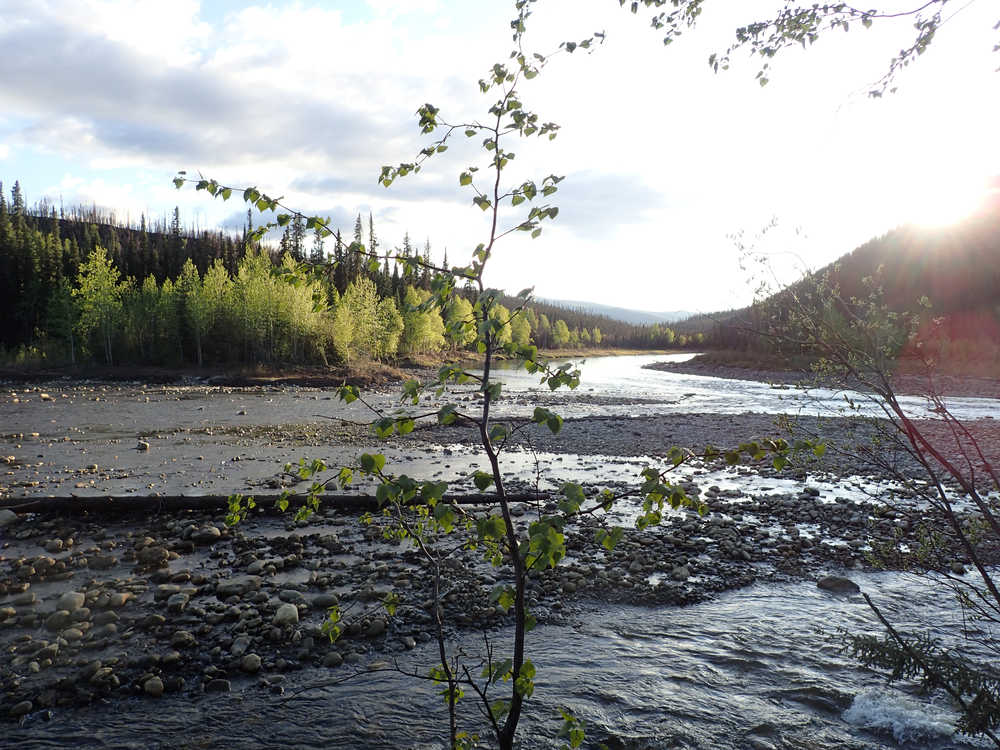A person might think that since we get our maximum sunlight on the summer solstice (on or about June 21), we should also get our peak warmth then. The sun’s calling the shots, right?
Not entirely, said former Alaskan Martha Shulski, author of “The Climate of Alaska” and now climatologist for the state of Nebraska.
“Alaska is warmest a few weeks after the solstice,” she said.
A lag exists between the peak of solar energy input and the warmth we feel. It’s a phenomenon that also shows up in winter or when people’s pipes mysteriously freeze in May.
“You see (the lag) in a lot of different places,” Shulski said.
Temperatures peak several weeks after we get the most sunlight because the ground absorbs energy from the sun and releases it to the air. This longwave radiation from the earth increases after summer solstice because the ground is slow to release the potent solstice-time energy. The day the heat emitted by the surface starts decreasing is usually the day we start feeling cooler temperatures.
The seasonal lag in temperatures is similar to one that happens every day in summer, Shulski said, when our thermometers don’t hit their maximums until a few hours after we receive our peak sunlight.
“Solar noon (in Alaska) is 2 p.m. and the daytime high is usually three to four hours after that,” she said.
This stall pattern also exists in winter, when temperatures are coldest in January, a few weeks after winter solstice. And, as Charles Deehr and Neil Davis noted in this column in 1976, there is a long delay between the coldest air temperatures and the time that cold penetrates deepest into the ground. The soil temperature 18 feet below the surface drops to its coldest in May, they reported.
Why do Chandalar Lake and Fairbanks reach their peak of warmth faster than Anchorage, Juneau, and other places near the ocean? The presence of a large body of water makes a big difference. In a place like Anchorage, the ocean absorbs much of the energy that the ground is converting to heat in landlocked areas like Fairbanks.
In about a month, much of the state will soon reach the average yearly date when the air won’t get any warmer. In Fairbanks, on July 19 the average daily temperature based on about a century of records drops from 63 to 62. Anchorage, because the ocean is nearby, starts cooling later, on July 29, when the average temperature drops from 59 to 58. Chandalar Lake reaches its heat peak about July 15. Adak and Shemya in the Aleutians are two of the last places in Alaska to give in, with their average temperatures not dropping until late August and early September.
Here’s some dates for the crest of summer warmth, from information supplied by the Alaska Climate Research Center: Chandalar Lake, July 15; Fairbanks, July 19; Galena, July 21; Valdez, July 26; Anchorage and Whittier, July 29; Prudhoe Bay, July 30; McCarthy, July 31; Kenai, Aug. 2; Juneau, Aug. 11; Kodiak, Aug. 12; Seward, Aug. 13; Yakutat, Aug. 18; Adak, Aug. 29; and Shemya, the land of endless summer, Sept. 3.
These numbers are long-term averages that match daily reality only during extreme coincidences. An Alaska parcel of air near you is prepared to defy the long-term average by being extra hot. Or unusually cold.
• Since the late 1970s, the University of Alaska Fairbanks’ Geophysical Institute has provided this column free in cooperation with the UAF research community. Ned Rozell is a science writer for the Geophysical Institute. A version of this column appeared in 2007.

